AchiEVing Perfection: Creating Specialized EV Spreads, Part One
If you’ve just started to battle competitively, then you might have seen players talking about these weird things called EVs. Perhaps you noticed them in Pokémon Showdown’s teambuilder. Luckily, Nugget Bridge already has basic guides about EVs: this one explains what they are, while this one explains how to get them in-game. This article is different from those two, though: here, I’ll discuss how to use EVs to give you an advantage in battle.
Introduction to Stat Points
Effort values (EVs), individual values (IVs), and the nature of a Pokémon all contribute towards a Pokémon’s stat points. Do you remember that time when your Pokémon barely hung on during a battle, or when you let out a huge sigh of relief after barely knocking out an opposing Pokémon? To make these advantageous situations more common, players want their Pokemon to have as many stat points as possible. This is part of the reason why Pokémon like Cresselia, Landorus-Therian, and Mega Evolutions are so inherently powerful—they have naturally high overall stats, known as base stats. Though you might see the term “base stats” used in-game, especially during Super Training, don’t be fooled—those are actually EVs. Back in Generation III when EVs were first introduced, there was no in-game text to tell exactly what EV-affecting items such as Macho Brace or Protein were for—their item texts were “promotes growth” and “raises the Attack stat”. Due to this, the term “effort values” was created. When the term “base stats” is used, it refers to the natural potential of any particular Pokémon: the stats a Pokémon has due to its species, essentially a species-specific starting point. If you’d like to check out a list of base stats, Bulbapedia has a nice list of every fully evolved (and Mega Evolved) Pokémon’s base stats.
Choosing an EV Spread
Let’s say I have a Landorus-Therian, and I want it to do as much damage as possible, as quickly as possible. I could give Landorus-T a very basic EV spread of 4 HP / 252 Attack / 252 Speed. A Pokémon can have a maximum of 252 EVs in any one stat, and can only have 508 EVs total, so I simply maximize its Attack and Speed while placing the leftover EVs in HP. This is a perfectly viable way to make EV spreads; just maximize two stats, and you’ve got a Pokémon that’s especially strong in two stats.
However, this approach doesn’t always work; take a look at Cresselia, a popular bulky Pokémon. I could give Cresselia an EV spread of 252 HP / 252 Defense / 4 Special Defense, and it would handle physical attacks such as Mega Kangaskhan’s Double-Edge and Bisharp’s Knock Off pretty well. But if I do so, special attacks such as Aegislash’s Shadow Ball and Hydreigon’s Dark Pulse will deal heavy damage to Cresselia, so perhaps maximizing Special Defense instead of Defense is the way to go. This Cresselia also carries Psyshock and Ice Beam, and maximizing Special Attack would allow it to possibly pick up important KOs. What spread should I choose?
Remember, Pokémon aren’t forced to maximize two stats! For example, I could easily give Cresselia a spread of 252 HP / 100 Defense / 156 Special Attack—all 508 EVs are still being used. However, these seem like arbitrary numbers; who knows what they do? Why not just take 508, divide it by 6, and place 84 EVs in every stat? Shouldn’t that make a Pokémon’s stats balanced? Well, doing so is possible, but is typically unoptimal. When damage calculators and teambuilders exist, there isn’t any reason to randomly distribute EVs. This process can be done very precisely; players can invest exactly the necessary amount of EVs to accomplish a goal, and then spend the savings elsewhere. It isn’t just for Cresselia, either—any Pokémon can be specifically trained to accomplish multiple goals with just a single EV spread.
Why Bother?
It may seem as if complex EV spreads aren’t worth the time needed to develop them. The gains are often small—sometimes only a couple of stat points. As such, new players often believe that the ability to create solid EV spreads is relatively useless. However, this is simply not true; games are won and lost on single points of health. By maximizing returns from EVs, these situations can be beneficial more often.
Don’t get me wrong. Learning how to make predictions, manage odds to minimize bad luck, create win conditions, form a game plan at Team Preview, teambuild, and most importantly practice are all important skills that successful players have. Creating EV spreads falls under the teambuilding category, and it certainly doesn’t encompass its entirety. Even if a player learns every advanced strategy, the ability to apply those skills in battle is what truly matter. Pokémon battles are won by the player who picks up four KOs, not the player with the fanciest EV spread. It’s telling that Sejun Park, the most recent World Champion, has used simple 252/252 spreads on many of his Pokémon. As can be seen from his team report, he chose these spreads because they fulfilled his goals perfectly. However, ignoring the benefits of using complex EV spreads is just as silly as solely focusing on them. There is a balance, but it is different for every player.
With that being said, why not just copy an EV spread from a top player? You can, of course, but consider this: when top players create EV spreads, they have specific goals in mind for that Pokémon which are typically team-specific. Let’s take a look at two Hydreigon: one from 2014 US National Champion Alex Ogloza’s (Evan Falco) winning team, and one from Worlds 9th place finisher and LCQ qualifier Wolfe Glick’s (Wolfey) team.

Hydreigon @ Choice Specs
Ability: Levitate
EVs: 84 HP / 12 Def / 236 SAtk / 4 SDef / 172 Spd
Nature: Modest
– Dark Pulse
– Draco Meteor
– Flamethrower
– Earth Power
Alex’s Choice Specs Hydreigon dealt tons of damage to Pokémon such as Aegislash, Kangaskhan, and Rotom formes, sometimes even being able to OHKO them. At the time, Hydreigon’s arch-nemesis was Garchomp, but Alex’s team carried two Pokémon that could OHKO Garchomp with Ice Beam before it could move: Choice Scarf Politoed and Swift Swim Ludicolo. This meant that Alex’s Hydreigon could afford to invest heavily into Special Attack.

Hydreigon @ Life Orb
Ability: Levitate
EVs: 12 HP / 108 Def / 132 SpA / 4 SpD / 252 Spe
Timid Nature
– Flamethrower
– Dark Pulse
– Draco Meteor
– Protect
But wait! Wolfe used a very similar team to Alex; he also had Politoed and Ludicolo. So why did he decide to use maximum Speed instead? Here’s his reasoning:
I decided to use Timid with maximum Speed to beat other Hydreigon. If I ran into an opposing Scarf Hydreigon that KOed my Hydreigon with Draco Meteor, odds were that they would be stuck at lower and lower Special Attack due to Gothitelle’s Shadow Tag, so it could essentially be considered a positive trade even if my Hydreigon was KOed. For this reason, Hydreigon+Gothitelle was a decent lead when I expected my opponent to lead Hydreigon, as few things could OHKO Goth and I would be able to take a quick Pokémon lead.
Wolfe’s Hydreigon allowed him to efficiently remove opposing Hydreigon from the game, since they were a major threat to his Gothitelle. This spread also does other cool stuff, such as allowing Hydreigon to OHKO every Rotom with Dark Pulse and Draco Meteor, as well as letting Hydreigon withstand a Dragon Claw from Garchomp and Life Orb recoil. Wolfe chose this EV spread because he recognized a weakness (opposing Choice Specs Hydreigon) and adjusted his own Hydreigon’s spread to help manage that weakness. Although concepts and ideas from historical EV spreads can be beneficial, it remains important to tailor each Pokémon’s EV spread to its surrounding team and metagame. There isn’t a singular “best EV spread” for any Pokémon.
Creating Your Own Goals
You too can do what Alex and Wolfe did! Consider the role of each Pokémon on your team, and then consider how you can create an EV spread that either covers your team’s weaknesses or supplements its strengths. Typically, there are three ways to accomplish this via EVs:
- Surviving an opposing Pokémon’s attack, or a common combination of attacks
- Outspeeding a specific Pokémon (or outslowing for Trick Room)
- Picking up specific KOs on opposing Pokémon.
You don’t have to make goals as soon as you build the team. It’s definitely alright to practice with 252/252 spreads, then create goals as you discover the team’s weaknesses. In fact, it’s encouraged! Once you understand how the team operates, you can make adjustments to your moves, items, EV spreads, and even Pokémon.
When creating your goals, don’t forget that 252/252 can be a very effective EV spread. If your goals simply involve hitting hard and hitting fast, don’t hesitate to use 252/252 just because it’s simple.
Don’t create too many goals for any single Pokémon to handle. Sometimes, not all goals are simultaneously accomplishable; additionally, having too many defensive goals can kill offensive potential. One Pokémon doesn’t have to do everything on the team—that’s what its teammates are for! When you set a defensive goal, make sure that goal is meaningful: that Pokémon should be able to deal significant damage to its specified opponent or provide important support, such as Trick Room.
EVing Against the Metagame
Choosing which goals you want your Pokémon to accomplish not only is determined by your team’s strengths and weaknesses, but also by the metagame itself. If Mega Mawile is very rare, then investing enough EVs to withstand Mega Mawile’s Play Rough is kind of silly, isn’t it? If I think Adamant Landorus-Therian is going to be everywhere, I’ll give my Hydreigon enough Speed EVs to reach 144 Speed so I can smash it with Draco Meteor before it moves. However, if I end up playing against Choice Scarf Landorus-T, the extra Speed I gave my Hydreigon becomes meaningless and could have been better used elsewhere.
The problem with EVing against the metagame is simple: it’s impossible to know what the opposing Pokémon are until the battle starts. This is especially true with the Speed stat, because a difference of a single point means just as much as dozens. “Speed creeping” is a term some players use for this phenomenon, in which players attempt to have their Pokémon outspeed opposition by a single point of Speed. In VGC 2014, this occured to Rotom. The season started out with Rotom commonly investing only 4 Speed EVs. As it progressed, players began to attempt to win the tie with 12 Speed EVs. As that became common, players bumped up to 20, then 28, then 36, and on and on until the tradeoffs became too big. Speed creeping players sometimes found their Rotom with 36 Speed EVs outspeeding an opposing Rotom with only 4 Speed EVs! As such, top players began to avoid Speed creeping entirely; Markus Stadter (13Yoshi37) gave his reasoning as such in his Worlds team report:
Let’s take a look at Speed: with Speed, it is dichotomous: your Pokémon is either slower or faster than the opponent’s. As such, there is much more potential for wasting EVs in Speed because of the fact that there are only two steps. There is no damage roll. Let’s take a second and compare my Nationals spread to the “standard” 252/252 Jolly Kangaskhan:
Mine: 207 HP, 181 Atk, 121 Def, 133 SpDef, 125 Speed
Standard: 181 HP, 177 Atk, 120 Def, 120 SpDef, 167 Speed
So that means that my Kangaskhan had +26 HP, +4 Atk, +1 Def, +13 SpDef at the cost of -42 Speed. Now what this means is that my Kangaskhan had 44 total stat points more than other Kangaskhan at the cost of going second to some Pokémon. Now if you take a look at common Speeds [from the VGC ‘14 metagame] and common EV spreads, I am sure you will realize that there is not all too much in between 125 and 167 Speed that is worth outspeeding, except for Pokémon such as Smeargle, bulky Charizard-Y and other bulky Kangaskhan. The latter two could also be 167 Speed should they decide to run maximum Speed, so you couldn’t be sure whether your Kangakskhan would outspeed or speed tie even with maximum Speed. And my team had plenty of ways to deal with Smeargle, so I saw no need to outspeed it.
Since Markus felt that he had answers to threats between 125 and 167 Speed, he saw no reason to heavily invest in Speed when the EVs could be used elsewhere.
However, Worlds is a much different event compared to Premier Challenges and Regionals. There are new and inexperienced players using strange gimmicks and a variety of strategies. Due to this, players will often use safe and bulky EV spreads or fast and aggressive ones; these are generally good against a wide range of opponents. Even so, the metagame must be taken into consideration. For example, the likelihood of encountering special Tauros is negligible and Defiant Tornadus isn’t legal, so preparing for those threats is rather silly. These are both extreme examples, of course, but there are plenty of more common adaptations that can only be picked up through practice. Perhaps using 20 Speed EVs is a good idea on Rotom, or perhaps it isn’t. It all depends on what other players are using.
Keep in mind that this concept is good for teambuilding as well. EV spreads aren’t the only way to adapt to the metagame—Pokémon themselves work too. Don’t know what’s popular? Check out the Reports section on Nugget Bridge for EV spreads used by top players, and keep an eye out on the forums for discussion of EVs. The Global Link usage statistics are also helpful in figuring out what’s being used right now.
Conclusion
Where’s the how-to, you might ask? Well, this article is mainly the “what” and “why” of EV spreads—look out for part two, where the “how” will be discussed. There, you’ll learn how to use a damage calculator as well as the basics of getting the most out of your EVs.
Article art created by Cometkins for Nugget Bridge. View more of her artwork on her Nugget Bridge forums thread.
20 Responses to AchiEVing Perfection: Creating Specialized EV Spreads, Part One
Leave a Reply
You must be logged in to post a comment.

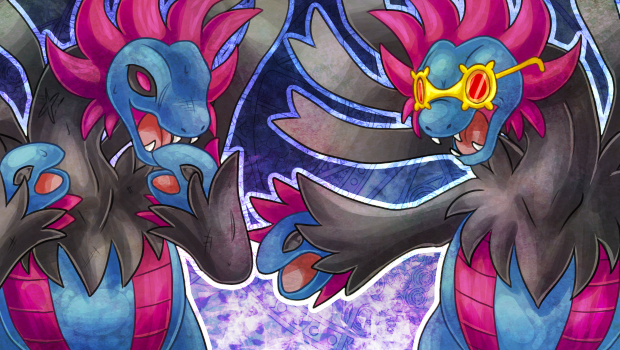
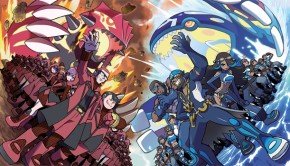
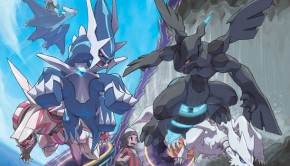
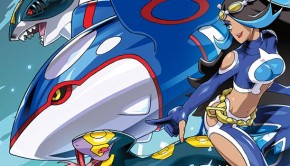

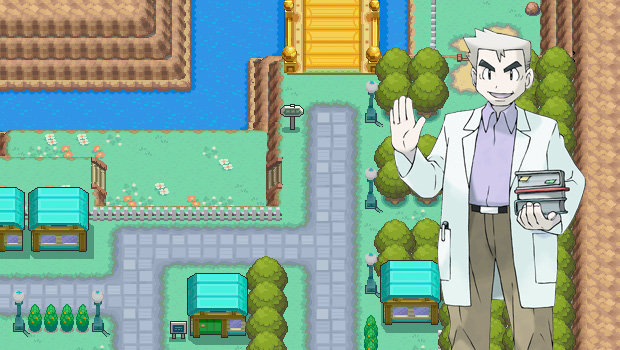




Once again, another amazing article. Your so well thought out and your ideas are so clearly explained. Loved the read and looking forward to part 2
Great article and extremely helpful just like all of your articles!
Very nice article, extremely well written.
I hope you’ll introduce players to the new Pokemon Attack Survival Calc in part 2. I wonder why it hasn’t got more attention.
Regardless, especially the part about the non-existent difference between 1 and a million speed caught my attention. I’ll definitely think twice about speed creeping in the future.
Great report can’t wait till part two. 🙂
I’ve always struggled with specialized EV spreads(it’s always the confusing part for me), so this article definitely helped. Looking forward to part two.
Read though it. It is a fairly good report, and you did the main thing you should do in these reports: State that there is no single best EV spread. There are good spreads, and then there is the best for your team.
Also, love the art for the article.
An excellent read. I am certain this will help out the more newer members of the VGC community. This really nails why we have spreads other than sometimes standard 252 252 4. I am looking forward to what part 2 will bring, as I have already digested this great read
A very nice read. I’m always looking for advice concerning Ev spreads because of how diverse they can be. I’m currently tinkering around with Mega Metagross evs and am stuck as to how I should approach it.
Either way, nice article
Fantastic article! Only started custom EV spreads this season, so this helps a ton.
I really love the fact that we’re getting articles like these on Nugget Bridge, especially right now. This kind of content is so so valuable. Great job DaWoblefet!
If you want a little more context on my Hydreigon, I can give a little bit more background on it (if you see this and want to add it to your article that’s fine with me too). The Speed lets me outspeed max speed Jolly Smeargle, while the HP and Attack allow me to survive up to Adamant 252 Mega Khan Return as well as Garchomp’s Dragon Claw 100% of the time. The Special Attack then allowed me to OHKO 4 HP Mega Khan back 81.3% of the time, a decent chance to OHKO many Rotom forms, and a little bit over a 50% chance to OHKO Shield Aegislash with Dark Pulse (important considering Aegislash, Mega Kangaskhan and Rotom-W were huge threats to my team).
EV spreads are incredibly important, and a good spread can really save the day. Thanks for covering the topic!
I loved this, as I’m getting more into Specialized EV Spreads lately. A quick nitpick, though. For defensive ev’ing. ALWAYS invest in HP first, as it increases the likelyhood of surviving attacks from both sides of the spectrum. Stupid things like 220 Hp and 100’s defenses is a real waste of EV’s.
That comment is actually not the best advice, as taking away from HP to invest in a specific Defense while still putting into HP can help you survive specific attacks and is more EV efficient. For example:
252+ Atk Life Orb Talonflame Brave Bird vs. 100 HP / 108 Def Mega Gardevoir: 130-153 (83.3 – 98%) — guaranteed 2HKO
vs.
252+ Atk Life Orb Talonflame Brave Bird vs. 212 HP / 0 Def Mega Gardevoir: 152-179 (89.4 – 105.2%) — 31.3% chance to OHKO
The former allows me to use less EVs while still surviving, allowing me to invest more EVs into special attack or speed where as other wise yeah I could survive more special attacks, but maybe this team really needs Gardevoir to be able to survive this attack.
Not necessarily, you’ll find on a calculator you have slightly more resistance to a move with 220 HP and 100 Def rather than 252 HP and 68 Def. The difference is usually 0.5% but that can be very important in a spread.
*Most of the time
Nucleose: 252+ Atk Life Orb Talonflame Brave Bird vs. 116 HP / 92 Def Mega Gardevoir: 133-157 (84.1 – 99.3%) — guaranteed 2HKO
Achieves almost the same while getting more overall bulk.
What I tried to say with my previous comment (which I failed to do, obviously) is that I’ve seen a LOT of spreads (Including several World’s level spreads, like Gebebo’s CharY, to name one…) that have been focused in mixing ev’s equally between hp and def/spdef that are suuuuuuch a waste, when they could have more HP, meaning more overall bulk, and more EV’s for other stats.
Bahaha, oh god, this just reminded me of the overthinking I did during the first few weeks of VGC15.
I felt threatened by Bisharp, so I built my Aegislash to survive everything it does… like putting on no item just so Knock Off wouldn’t deal enough damage and then EVing to survive a Choice Banded Sucker Punch and hit back with Sacred Sword…
…only to find out that a Colbur Berry would do all that for me and I didn’t even need to put any EVs into Defense. lol.
Bahaha, oh god, this just reminded me of the overthinking I did during the first few weeks of VGC15.
I felt threatened by Bisharp, so I built my Aegislash to survive everything it does… like putting on no item just so Knock Off wouldn’t deal enough damage and then EVing to survive a Choice Banded Sucker Punch and hit back with Sacred Sword…
…only to find out that a Colbur Berry would do all that for me and I didn’t even need to put any EVs into Defense. lol.
Not true, for two reasons:
1. Pokémon with significantly higher base HP than defenses (e.g. Hariyama) are better off investing in their defenses first in pretty much every case. This applies to Pokémon with slightly higher HP than defenses, to a lesser extent (for instance, when I was running Gastrodon the most efficient use of EVs for my defensive targets came out to 228/60/148).
2. If you’re only aiming for a defensive target on one side of the spectrum while also aiming for an offensive target, putting fewer EVs into HP can free up more for your offensive target at the cost of losing bulk on the other side.
I never pay attention to specific EV spread but after my first tournament last weekend at the Netherlands Regionals I came to the conclusion that it could be very handy if your pokémon can survive specific moves, like my Heliolisk used in that tournament, it was a simple 252 252 spread, but i changed it now and it can survive so many more attacks, and still not loses it role. I know for sure if i had that spread earlier it had made a big difference.
But great article and definitely gonna pay more attention to it.
However, sometimes dropping your HP number may be the best thing to do, even if it does sacrifice some bulk. I.e. giga drain amoonguss and drain punch conk/scrafty. With these, it is so much better investing for a lower HP, as with draining moves, you recover a larger % of HP. Also useful with sub-seeders, though that is more singles. On the contrary, a larger HP can help in taking down a larger foe, due to recoil. i.e. I maximized my zapdos’ HP so that when it survived mega kang’s double edge, it could return the favour by KOing it back, after the recoil damage.
Another time, thak you for a very nice article!. Its very usefull for begginers like me 🙂